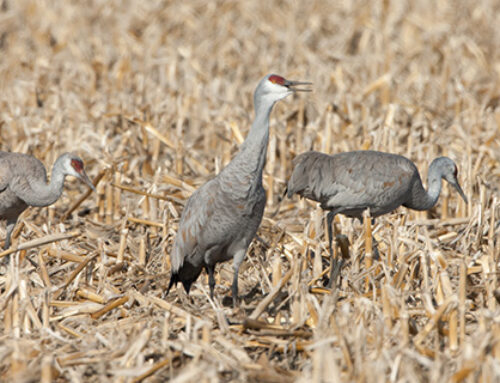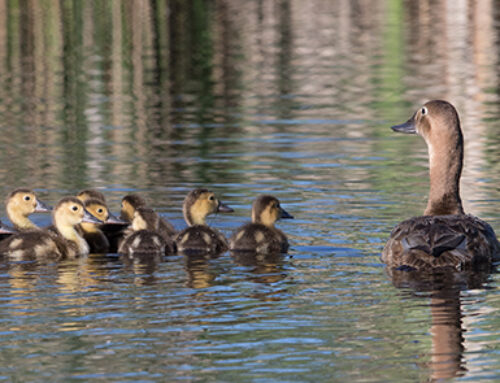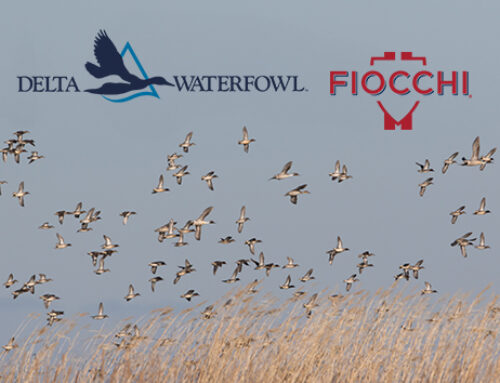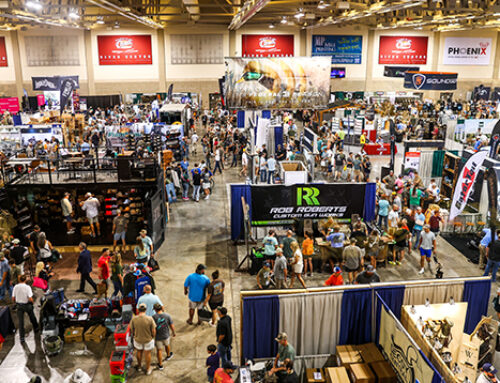North Dakota Waterfowl Survey Shows Decrease in Breeding Ducks, ‘Fair’ Wetland Conditions

For immediate release
June 13, 2024
BISMARCK, NORTH DAKOTA — The number of breeding ducks that settled in North Dakota this spring declined 15%, according to the annual spring breeding waterfowl survey conducted by the North Dakota Game and Fish Department.
Even so, the 2024 estimate of 2.9 million ducks ranks as the 30th highest tally in the 77 years the survey has been conducted and sits 17% higher than the long-term average. The state’s wetland count also dropped from the prior two very wet years, ranking as the 32nd wettest since 1948.
“By and large, all species were flat to down,” said Mike Szymanski, migratory game bird supervisor for NDGFD. “Mallards, for instance, were down about 19%, pintails were down about 29% and blue-winged teal down roughly 13%. These species being down from last year is one thing, but when you compare it back to what we consider to be one of our best periods for breeding ducks in North Dakota (1994 to 2016), we’re down a lot more than that. So overall, mallards, pintails, blue-winged teal, gadwalls, wigeon and northern shovelers are down anywhere from 24% to 49% from that 1994 to 2016 time period.”
Canada geese also declined to 251,000, down from 297,000 in 2023, but remain a strong population, Szymanski said.
The survey was conducted May 10-17 across 1,820 miles of roadside transects. Notably, North Dakota started the spring dry, but consistent rains in late April, May, and into June have filled many wetland basins across the state.
“Coming out of winter, we were certainly quite dry after having a mostly open winter across the state, but it rained a fair bit in the 30 days leading up to our survey, so that kept it from being really dry,” Szymanski said. “At the time of our survey, wetland conditions were considered ‘fair.’ We had a lot of new water on the landscape during the survey that really wasn’t there when ducks were moving through.”

Timing is everything when it comes to wetland conditions and duck production. The above Breeding Habitat Conditions Map represents the compiled conditions data as of the end of May 2024. When ducks began arriving in the Dakotas a month or more earlier than that, conditions didn’t look this good, so it’s possible that ducks that might have otherwise nested there continued north to find more suitable conditions.
Mike Buxton, waterfowl programs director for Delta Waterfowl, said some ducks pushing northward this spring likely flew right past North Dakota, leading to lower breeding duck survey numbers. Another factor is the overall lower number of ducks continentally.
“We’re coming out of several years of lower duck production because of drought across a wide swatch of the prairie pothole region,” he said. “It takes time to build the breeding population up again.”
Szymanski and Buxton both pointed out that while wetland conditions started out dry in March and April, they’ve greatly improved since.
“The timing of water on the landscape is really important,” Buxton said. “If you don’t have good runoff and early spring rains, it doesn’t look great to the ducks. While the rains came too late to capture some of those early migrant flocks, the ducks that did settle in North Dakota will benefit from improved conditions. The water is great for renesting efforts and brood habitat.”
Szymanski expressed concern about the loss of North Dakota lands enrolled Conservation Reserve Program and declining grassland acres used by ducks for nesting cover.
“While our overall duck population count this year was about 2.9 million birds, that hardly compares to 5.4 million in 2002, our record high,” he said. “So, we’re down considerably and were getting into this realm of a lower average where we probably won’t be above 3 million breeding ducks very often based on our landscape conditions.”
The ongoing loss of wetlands and upland nesting cover in North Dakota and throughout the PPR continues to be a threat to strong continental waterfowl populations.
“The Dakotas have carried a lot of the duck production in the PPR during the past couple of decades,” Buxton said. “It’s always been a really important region for ducks.”
Conservation of the remaining wetland habitat in North Dakota and the PPR remains critical, said John Devney, chief policy officer for Delta Waterfowl.

“Developing and implementing new tools to conserve prairie wetlands is so important,” he said. “Delta continues to work with the U.S. Department of Agriculture and Natural Resources Conservation Service to keep small wetlands on the landscape. Those small wetlands are the engine that drives duck production in North America.”
The annual North Dakota survey is an important first indicator of breeding duck populations across the prairies. Much like North Dakota, wetland conditions have improved during the past two months across prairie Canada, which should boost duck production.
The strength of the expected fall flight will come into focus during the next few months. The U.S. Fish and Wildlife Service and Canadian Wildlife Service are completing and compiling data for the 2024 Waterfowl Breeding Population and Habitat Survey. Results are expected in late August. The 2023 survey estimated the total breeding duck population at 32.3 million, 9% below that survey’s long-term average.
Delta Waterfowl is The Duck Hunters Organization, a leading conservation group working to produce ducks and secure the future of waterfowl hunting in North America. Visit deltawaterfowl.org.
For more information, contact Mike Buxton at mbuxton@deltawaterfowl.org.






Leave A Comment